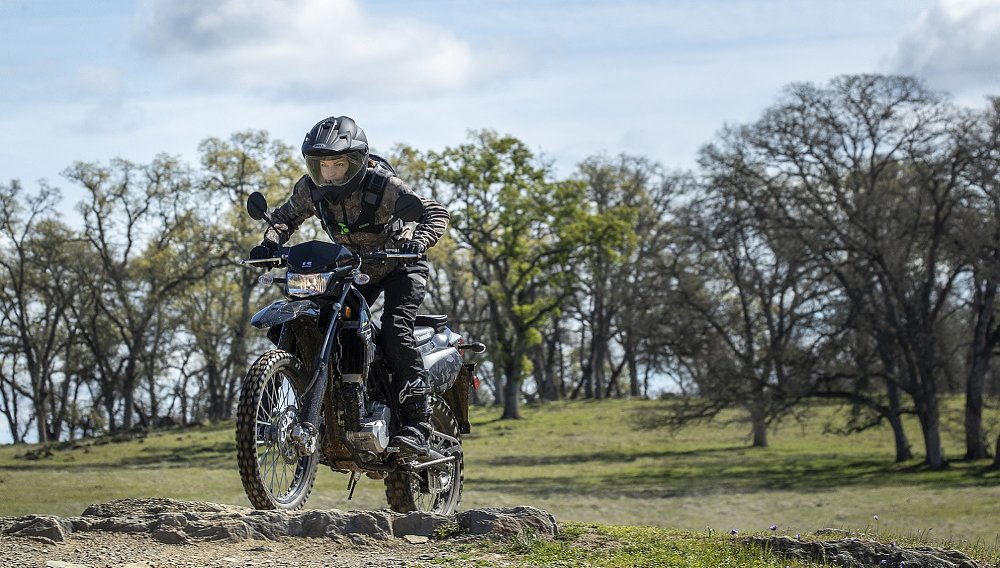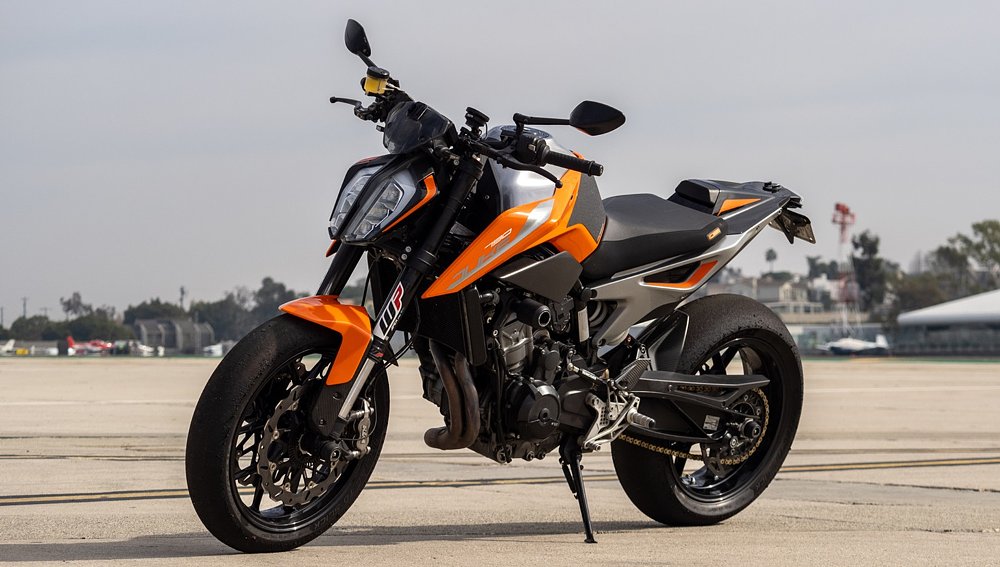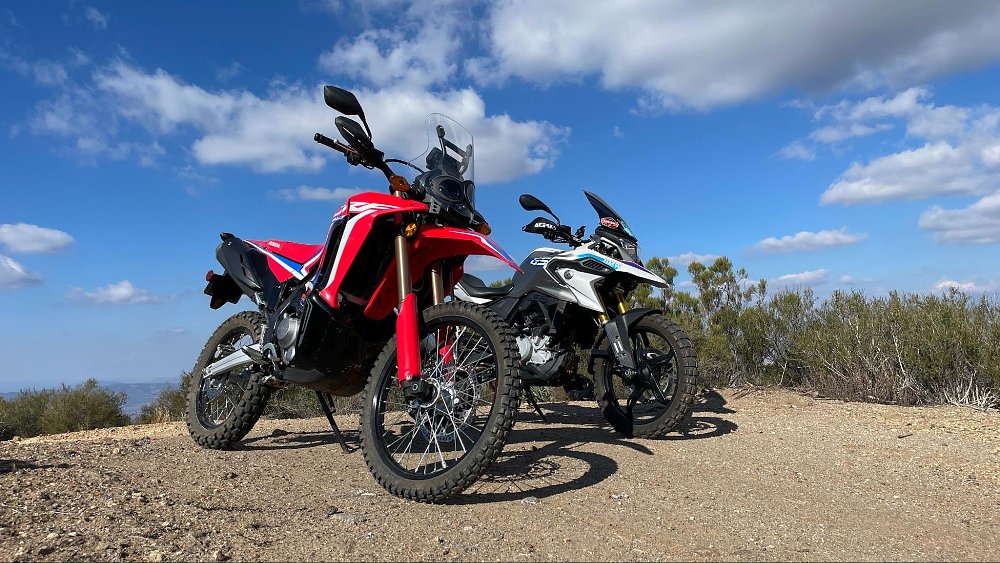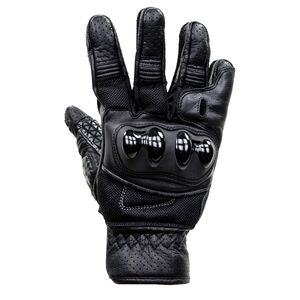It was a sight, serene and implausible, I normally miss. A hidden duck pond existed alongside this dusty truck trail and any other day I would have ridden right by it. But not this day.
The sun flashed off the calm mirror surface. It caught my eye and I trundled to a stop. My curiosity was ignited — is there a path down there? Did I actually hear a quacking duck? The Kawasaki KLX300 thrummed back to life with the starter button and I began to poke around the tall grass and eventually found a well worn path to the water’s edge.
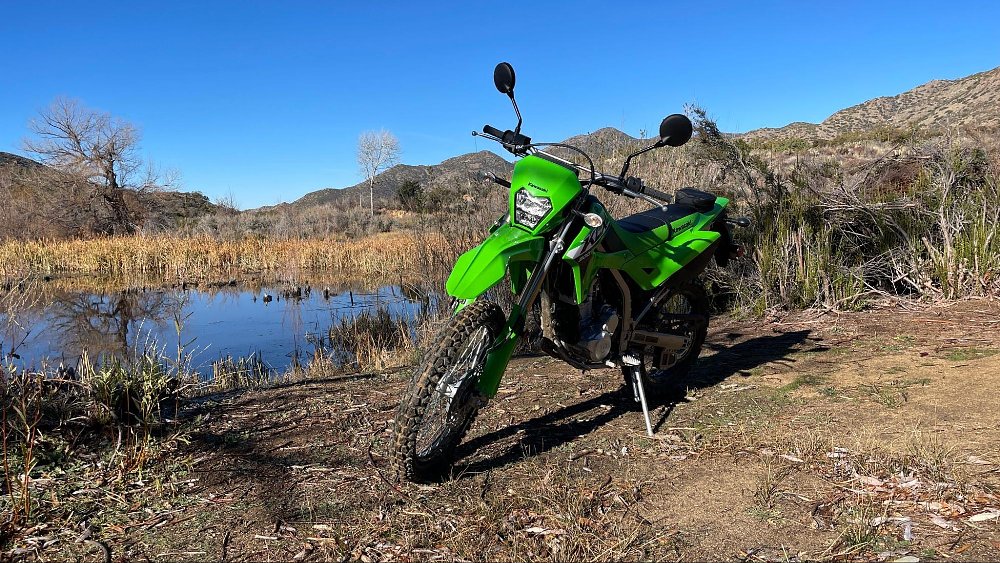
I’ve ridden this truck trail hundreds of times before. On my own dual-sport that is decidedly more enduro-focused, I normally zip down this truck trail as if it is a freeway. It is simply the fastest path to “the good stuff,” the rocky single-track that my friends always ask to come ride and where I like to test my skills.
The view behind the KLX300 handlebar was somehow different, and it had a transformative effect on the mundane truck trail. The KLX300 was coaxing me to tap into the more meditative aspects of dual-sport riding. A solo exploration into the wilderness to find peace — not adrenaline.
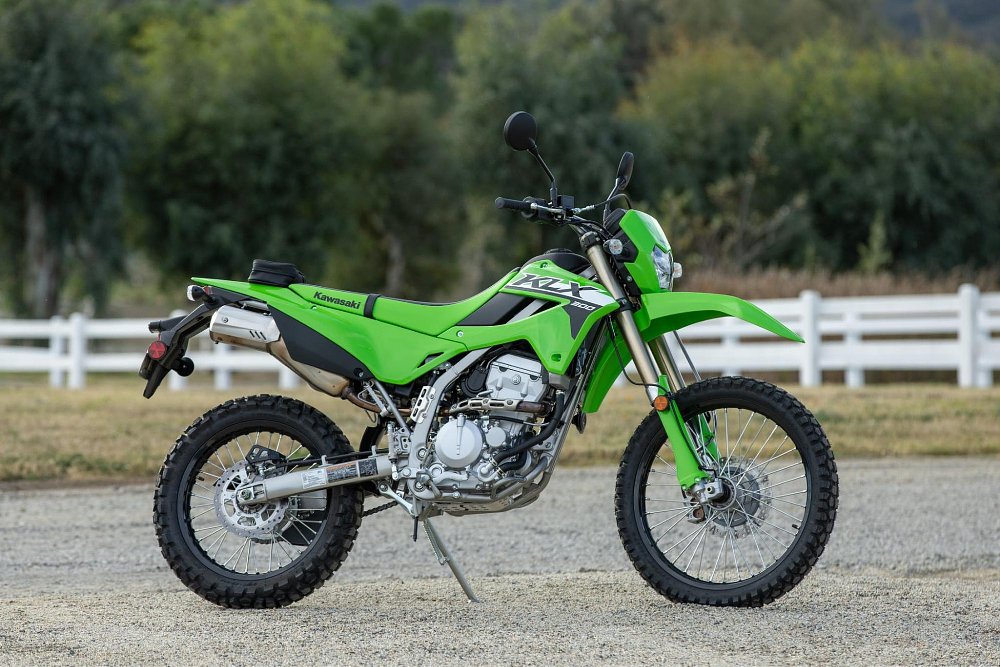
Dual-sport state of mind
My first ride review on the KLX300 in Northern California stirred similar sentiments. I honestly did not expect to feel the same on my home turf, away from all the programmed routine of a press event.
Not much has changed about the KLX300 in these few short years. The 2024 model has an updated LED headlight, refinements to the bodywork aesthetics, a new tail light design, and updated ignition lock. In essence, this is the same bike as before. So without the obligation of describing every specification of the KLX300 in detail, I sought to focus instead on the sum of those parts and how they continue to inspire the spirit of leisurely adventure.
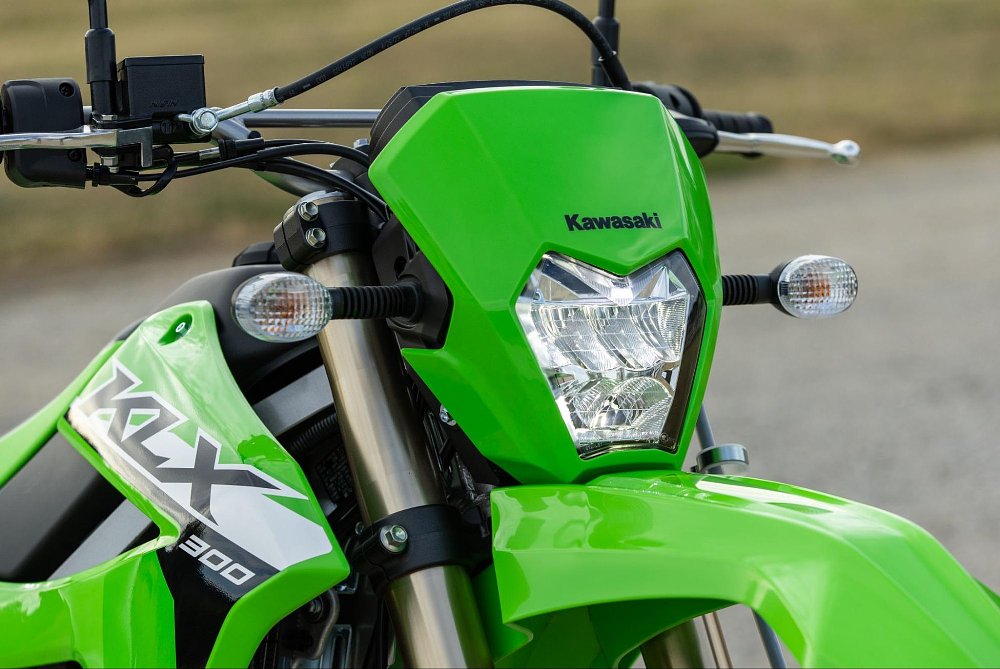
On the street
I have to confess I am one of “those” dual-sport riders who might very well load up their bike into a pickup truck to get to the trailhead instead of pounding out the pavement miles. I don’t want to log needless hours on my pampered trail princess (a Husqvarna FE250). The KLX300 engine, however, is less high-strung and better suited for the asphalt commute.
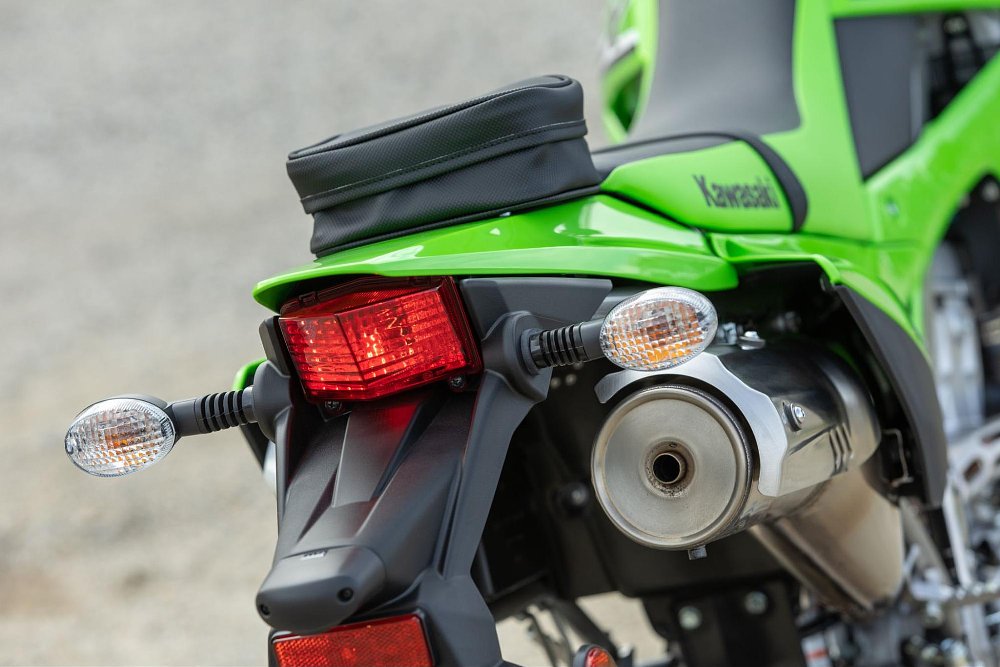
On the flowing back-country roads I clicked my way through the gears in rapid succession and the KLX loped along in top gear around 65 mph. The vibrations were a tad numbing in the seat, and a lack of wind protection buffeted me around, but meandering along winding country roads on a crisp but beautiful sunny winter day was time well spent. It was roughly over an hour of street riding and I think any longer would have felt tedious in the saddle of KLX.
As familiar landmarks flitted by in my peripheral view, my heightened anticipation to get to the dirt roads quickened my heartbeat. The hidden trailhead popped out around the next bend and the KLX went into a satisfying controlled slide as the asphalt gave way to loose dirt.
In the dirt
At first, I had a hustled pace and my MX boots would accidentally bang downshifts, the short KLX gearing demanded constant management, and at this speed the forks were diving on hard braking. The KLX was talking to me, and it was whispering “slow down.”
Riding alone off-road isn’t my first choice. While street riding presents its own dangers, there is something oddly comforting about knowing that a car will likely pass by and perhaps help in an emergency situation. On these truck trails, a lone hawk circling in the distance might be the only sign of life nearby. If it goes wrong out here, there isn’t much help to be had.
With that vulnerability in mind, I backed the pace down and settled into a rhythm. Now the KLX tractored through chunky loose rocks with ease, and I glided around dirt corners instead of skidding through them. I found the flow state of the KLX300. It is this happy medium pace where it really showed its quality.
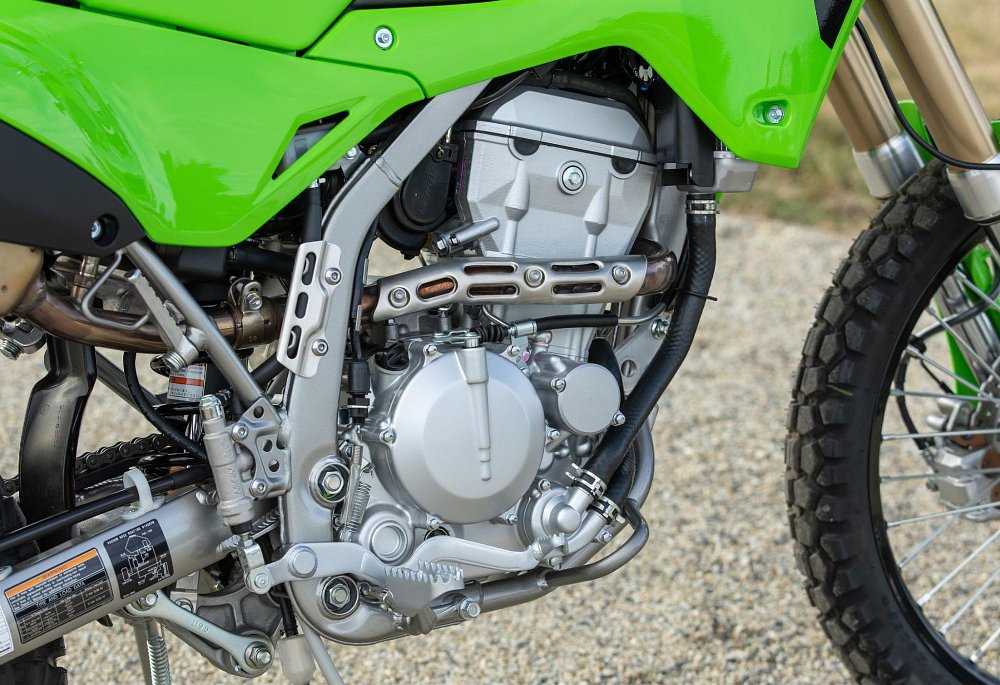
The KLX’s 292 cc indomitable four-stroke produces predictable power. Like Goldilocks porridge — not too hot, not too cold — but perfectly warm. At all points of the powerband the output is usable and tame, good in the dirt and even better for a newer rider getting accustomed to it. I did try lugging some higher gears, however, and the KLX threatened to stall out, so a proactive clutch hand and active shifting was required.
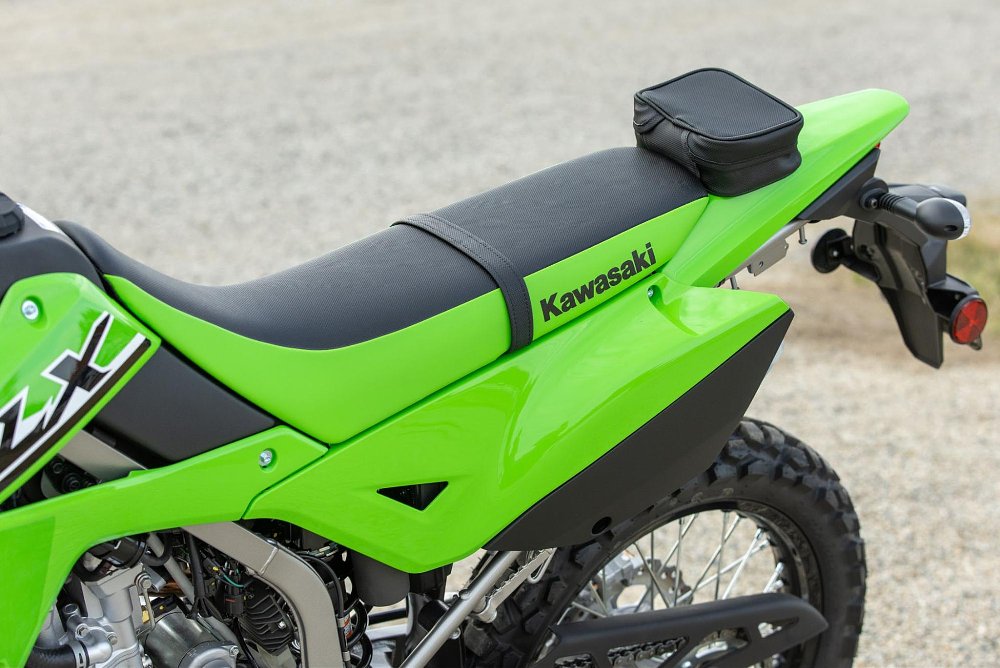
The standing position on the KLX300 is on point. All controls felt in reach and I could grip with my knees when terrain got rough. I say this because I have watched so many new riders in the dirt onboard big heavy ADV bikes and this becomes a big struggle point — the ergonomics can be awkward. It may not be a popular opinion, but I believe new adventure riders would be better served earning their dirt skills on a dual-sport like the KLX before investing in the big, cumbersome giants of the ADV motorcycle segment. Lighter and easier to maneuver than a big ADV bike, the approachability of the friendly Green Machine convinced me to make numerous photo stops and to explore around a bit. U-turns, waddling through tall slick muddy grass, squeezing between big boulders — the KLX was down for all this mischief in tight quarters.
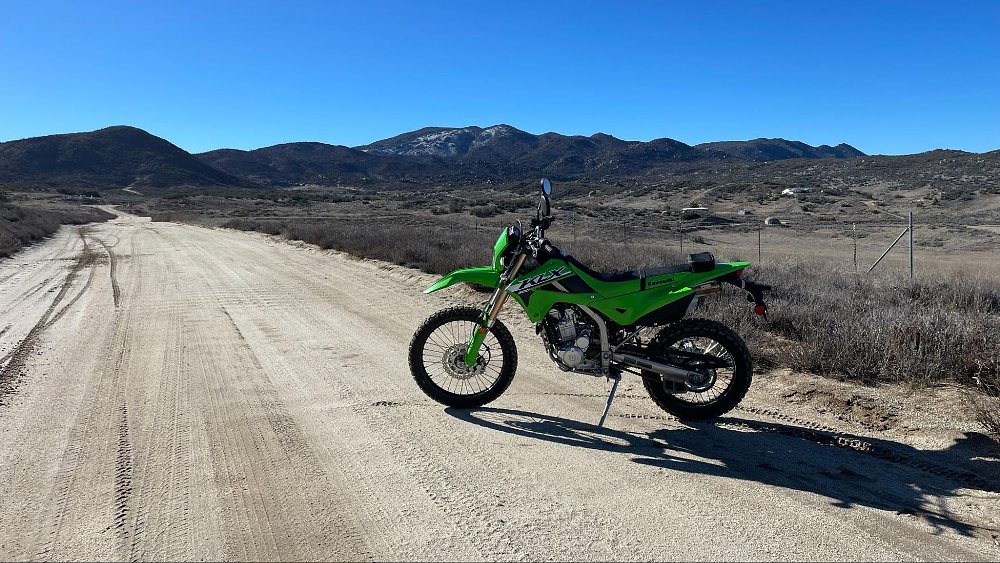
Final reflections
My own dual-sport at home retails for almost twice the amount of the $6,399 price tag on the KLX300. It is high performance and it's why I will trailer queen it to the trailhead and then find the meanest, rockiest, single-track sections to challenge myself. Admittedly, this is probably not the usual application of a dual-sport. It is very much at the extreme end of the riding genre.
My ride on the KLX300 was a good reminder of that. The other side of dual-sport exists. The one of spontaneity and exploration. Like hearing a quack and seeing a glimpse of light, and then idling through blinding tall cattails to seek out a new point of interest. And perhaps a new perspective. One that was there the whole time, if I only slowed down to see it.
That is the power of dual-sport — to slow down life, go to remote places, and appreciate the beauty that has been waiting for you to just stop and see it.
| 2024 Kawasaki KLX300 | |
|---|---|
| Price (MSRP) | $6,199 to $6,399, depending on color |
| Engine | 292 cc, liquid-cooled, DOHC, four-stroke single |
|
Transmission, final drive |
Six-speed, chain |
| Claimed horsepower | N/A |
| Claimed torque | N/A |
| Frame | Tubular, semi double cradle |
| Front suspension | 43 mm cartridge fork, adjustable compression damping; 10.0 inches of travel |
| Rear suspension | Uni-Trak single gas charged shock, adjustable spring preload, adjustable compression and rebound damping; 9.1 inches of travel |
| Front brake | Two-piston caliper, single 250 mm petal disc |
| Rear brake | Single-piston caliper, 240 mm petal disc |
| Rake, trail | 26.7 degrees, 4.2 inches |
| Wheelbase | 56.7 inches |
| Seat height | 35.2 inches |
| Fuel capacity | 2.0 gallons |
| Tires | Dunlop D605, 3.00-21 front, 4.6-18 rear |
| Claimed weight | 304 pounds |
| Available | Now |
| Warranty | 12 months |
| More info | kawasaki.com |











